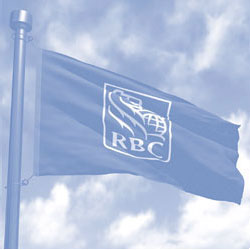
| 2002 objectives (1) | 2002 performance (1) | 2003 objectives | Medium-term goals (3-5 year) | ||||
| 1 | Valuation | ||||||
| Maintain top quartile valuation levels: | |||||||
| 1st quartile of TSX Banks & Trusts Index | 1st quartile |
1st quartile of S&P/TSX Composite Banks Index (2) | N/A | |||
| 1st quartile of TSX Banks & Trusts Index | 1st quartile (3) | 1st
quartile of S&P/TSX Composite Banks Index (2) | ||||
| Share price growth: | Above the TSX Banks & Trusts Index | Above the index | Above
the S&P/TSX Composite Banks Index (2) | ||||
| 2 | Earnings growth | ||||||
| Grow diluted earnings per share by: | 5–10% (4) | 27% (4) 13%, excluding goodwill amortization | 10–15% | 10–15% | |||
| 3 | ROE | ||||||
| Achieve an ROE of: | 17–19% (4) | 16.6% (4) | 17–19% | 20%+ | |||
| 4 | Revenue growth | ||||||
| Achieve revenue growth of: | 7–10% | 11% | 5–8% | 8–10% | |||
| 5 | Expense growth | ||||||
| Operating
expenses versus operating revenues (5): | Operating
expense growth less than operating revenue growth | Operating
expense growth 8%, compared to operating revenue growth of 11%. Excluding recent U.S. acquisitions, operating expenses down 5% and operating revenues flat | Operating
expense growth less than operating revenue growth | N/A | |||
| 6 | Portfolio quality | ||||||
| Achieve a ratio of specific provisions for credit losses to average loans, acceptances and reverse repurchase agreements (6): | .45–.55% | .51% .49% net of effect of credit derivatives (7) | .45–.55% | .35–.45% (was .30–.40%) | |||
| 7 | Capital management | ||||||
| Capital ratios (6): | Maintain
strong capital ratios | 9.3% Tier 1 capital ratio 12.7% Total capital ratio versus medium-term goals of 8% and 11–12%, respectively | Maintain
strong capital ratios | 8–8.5%
Tier 1 capital (was 8%) 11–12% Total capital | |||
| Dividend payout ratio (8) | N/A | 37% | 35–45% | 35–45% (was 30–40%) | |||
| (1) | Excluding special items in 2001 (for growth in earnings, revenues and expenses) detailed on page 27. | ||||||
| (2) | The TSX is discontinuing the TSX Banks & Trust Index in May 2003 and replacing it with the S&P/TSX Composite Banks Index. | ||||||
| (3) | Computed by us on October 31, 2002, based on analysts’ average core diluted earnings per share forward estimates for 2003. | ||||||
| (4) | With the adoption in Q1/02 of new accounting standards regarding business combinations in Canada and the U.S., goodwill is no longer amortized. Accordingly, 2002 objectives for earnings growth and ROE are no longer on a “cash” basis, as reported earnings are now very similar to “cash” earnings. | ||||||
| (5) | Operating expenses exclude special items, costs of Stock Appreciation Rights (SARs) and retention compensation associated with acquisitions, while operating revenues exclude special items. | ||||||
| (6) | Calculated based on our Canadian GAAP financial statements. | ||||||
| (7) | See discussion on page 46. | ||||||
| (8) | Common share dividends as a percentage of net income after preferred dividends. | ||||||